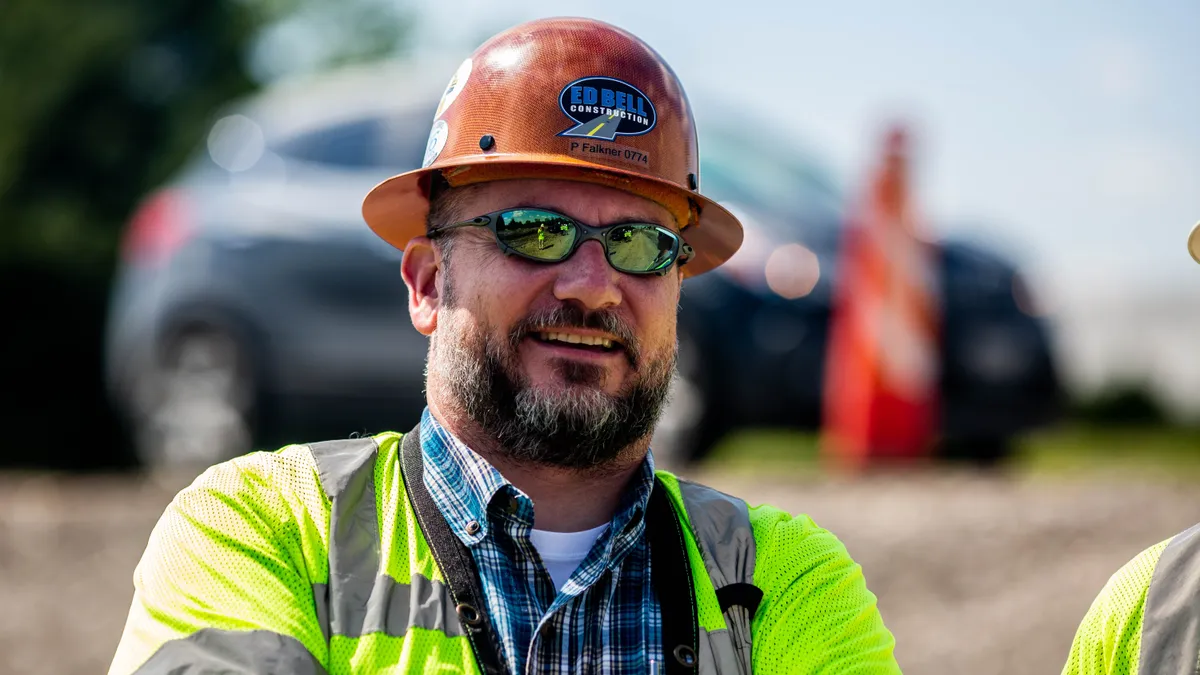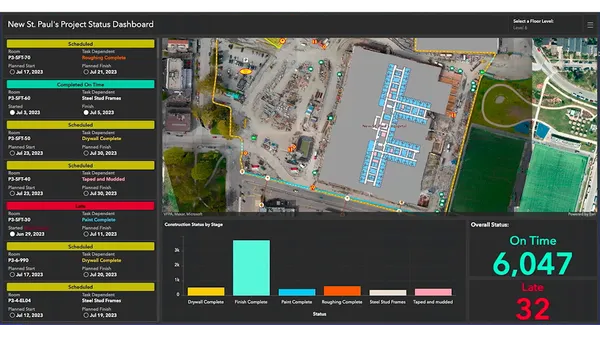ConTech Conversations presents a discussion with a leader in the construction technology field each month. Click here for past discussions.
Phillippe Falkner wants you to be ahead of the curve.
As safety director and business services specialist with Dallas-based Ed Bell Construction, Falkner believes that contractors need to get more in touch with how tech weaves into their business, from big data to safety and everything in between.
After getting his start as a surveyor, he moved to what he calls the “forefront” of tech like CAD, draft modeling and more in the mid-1990s. From then on, he says he's always been the “tech guy.”
Here, Construction Dive talks with Falkner about how contractors can be safer and more efficient and stay ahead of their competitors.
This interview has been edited for brevity and clarity.
CONSTRUCTION DIVE: Safety is a big concern for a lot of contractors and workers. How can tech aid safety efforts and initiatives, or just make people safer?
PHILLIPPE FALKNER: While safety has always been the primary concern, it’s taken on a whole new angle the last two-plus years. The number of new people to construction is overwhelming, many of them with no experience doing any type of “safety exposure” work, for lack of a better term.
Challenges that the industry always faced are exacerbated. Things the industry had overcome, and weren’t current issues, have resurfaced.
Tech and software are going to be the keys to mitigating this, because there’s just too many new folks for current safety professionals to handle, along with all of the old ongoing concerns.
Efficiently tracking near misses, leading indicators and having efficient, useful inspections you can actually follow up on are key. You’ve got to find a better way to mitigate the hazards for your employees or engineer the hazard out entirely.
But so many hazards cannot be avoided; we need new tech to protect them instead of just accepting “it’s the way it is.”
What areas of construction tech are you the most excited about?
I’m still excited to see where the drone market continues to head. I read an article recently that stated drone advancements in our industry had plateaued; I don’t believe that at all. There are still so many new ways to use drones for safety, project quantification of work, inspection and planning.
People may be talking about these in limited circles and doing R&D here and there, but that tool is not yet in the hands of every contractor. That should be a day-to-day tool, no different from a survey crew or a measuring wheel.
I think while drones themselves have become affordable, much of the processing software and other capabilities that are being developed are still cost prohibitive. Economy of scale should catch up soon, and then I see these being as mainstream as having a digital plans solution or 3D modeling/BIM.
Looking further out, the technology and science behind wearables, and what enormous amount of data is untapped there fascinates me. Do we really know about our most important resource: our employees?
COVID changed so much about why people work, where, what they do and for what reasons.
Observing motions and production, and figuring out how they’re affected by geography, scope of work, time of day, time of year, etc. leads us to the great pile of data in the bucket of “we don’t know what we don’t know.”
Only then can we start figuring out if there’s some other metric we need to be avoiding or taking advantage of.
What is one thing that contractors who are hesitant about using tech should know?
I feel like so many contractors still see technology, software, etc. as an “extra” instead of a baseline tool. These items are just as key to performing and controlling costs as any piece of equipment or resource in a budget. Too often because it’s lumped into an overhead allocation, it’s seen as expendable.
The amount of technological change over the last 20 years is substantial. But more has changed in the last 10 years, five years and especially two years than the preceding same time periods. And anything that hadn’t yet been affected, COVID and 2020 changed all that.
All companies have choices to make about whether to be ahead or behind. Your competition is using it to their advantage. If tech was a fad, it would have burned out by now. Owners, insurance companies and the government are all expecting contractors to use this tech to improve projects; many are mandating it.
The time to be hesitant has passed. Whether it’s fear of implementation, fear of cost, fear of change — the industry and your competition are moving past their fears, and past you. They’ve survived and thrived. Soon, they won’t be viewed as ahead of the curve, you will only be viewed as behind it.













